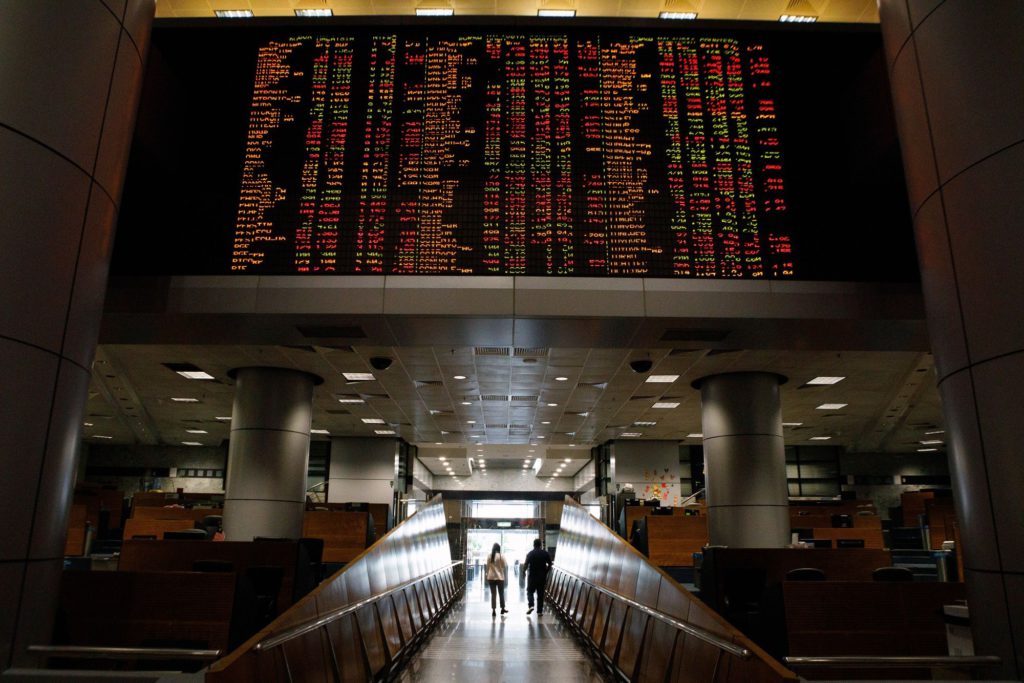Stocks sold off as Jerome Powell continued to sound unequivocally hawkish as the Federal Reserve pushed ahead with its most-aggressive tightening campaign since the 1980s to thwart inflation.
(Bloomberg) — Stocks sold off as Jerome Powell continued to sound unequivocally hawkish as the Federal Reserve pushed ahead with its most-aggressive tightening campaign since the 1980s to thwart inflation.
The S&P 500 suffered its worst rout on a Fed decision day since January 2021. Stocks came decidedly lower after Powell said the Fed still has “some ways to go” in its policy cycle, adding that it’s premature to think about a pause as rates could peak at higher levels than previously thought. The move wiped out an earlier rally driven by his remarks that a slower pace of hikes could come as soon as December.
“It’s as if investors came to a haunted house and got candy, but once they unwrapped it, saw it was soggy broccoli,” said Max Gokhman, chief investment officer at AlphaTrAI.
The hint of a potential downshift in tightening saw estimates for the Fed peak in policy rates for 2023 briefly drop below 5% right after the announcement. But by the end of the session, forecasts extended to a new cycle high of around 5.1% for the May meeting.
Megacap tech bore the brunt of the selling, with giants like Apple Inc. and Tesla Inc. tumbling more than 3.5%. In late trading, Qualcomm Inc., the biggest maker of smartphone processors, slumped on a weak forecast. Two-year US yields — which are more sensitive to imminent Fed moves — reversed course and pushed higher. The dollar gained.
“When Powell made his comments regarding nothing pivot-related, or no shot of that, I think that was the ‘dagger’ for the market,” said Alon Rosin, head of institutional equity derivatives at Oppenheimer & Co.
The Federal Open Market Committee said that “ongoing increases” will still likely be needed to bring rates to a level that’s “sufficiently restrictive to return inflation to 2% over time,” in fresh language added to the statement. Officials unanimously decided to lift the target for the benchmark rate by another 75 basis points to a range of 3.75% to 4%, its highest level since 2008.
Comments:
Ronald Temple, head of US equity at Lazard Asset Management:
“This is not an environment in which the Fed will pivot or signal a pivot. To do so would be malpractice, and the Fed knows that.”
Ian Lyngen and Ben Jeffery, strategists at BMO Capital Markets:
“One thing is obvious from the Fed’s tone; ‘Santa Pause’ ain’t coming to town.”
Edward Moya, senior market analyst at Oanda:
“Stocks might struggle here as the risks of the Fed taking rates above 5.00% are clearly still on the table.”
Sam Stovall, chief investment strategist at CFRA:
“Data will largely determine the policy path going forward. Our best guess is that the Fed continues to take the more hawkish path.”
Quincy Krosby, chief global strategist at LPL Financial:
“Factoring in the bond market’s assessment, markets are becoming increasingly convinced that the path towards the terminal rate will include a recession.”
Christopher Harvey, equity analyst at Wells Fargo Securities:
“The major message during the press conference was that rates needed to go (and stay) higher for longer than many expected.”
Data Wednesday showed hiring at US companies rose in October by more than forecast, underscoring resilient labor demand despite the Fed’s efforts to cool the economy. A strong job market has fueled fast wage growth, contributing to rapid inflation and putting pressure on the Fed to aggressively tighten monetary policy.
The Treasury halted the longest string of cutbacks to its quarterly sales of longer-term debt in about eight years, showcasing the end of a period of historic reduction in the fiscal deficit.
In corporate news, Boeing Co.’s chief said the planemaker could generate $10 billion in cash annually by mid-decade, once it turns around its operations after years of setbacks and miscues. China has ordered a seven-day lockdown of the area around Foxconn Technology Group’s main plant in Zhengzhou, a move that will severely curtail shipments in and out of the world’s largest iPhone factory.
Key events this week:
- Bank of England rate decision, Thursday
- US factory orders, durable goods, trade, initial jobless claims, ISM services index, Thursday
- ECB President Christine Lagarde speaks, Thursday
- US nonfarm payrolls, unemployment, Friday
Some of the main moves in markets:
Stocks
- The S&P 500 fell 2.5% as of 4 p.m. New York time
- The Nasdaq 100 fell 3.4%
- The Dow Jones Industrial Average fell 1.6%
- The MSCI World index fell 1.7%
Currencies
- The Bloomberg Dollar Spot Index rose 0.3%
- The euro fell 0.5% to $0.9830
- The British pound fell 0.8% to $1.1395
- The Japanese yen rose 0.3% to 147.77 per dollar
Cryptocurrencies
- Bitcoin fell 1.1% to $20,245.42
- Ether fell 2.5% to $1,536.43
Bonds
- The yield on 10-year Treasuries advanced four basis points to 4.08%
- Germany’s 10-year yield advanced one basis point to 2.14%
- Britain’s 10-year yield declined seven basis points to 3.40%
Commodities
- West Texas Intermediate crude rose 1% to $89.23 a barrel
- Gold futures fell 0.6% to $1,640 an ounce
–With assistance from Lu Wang, Vildana Hajric, Emily Graffeo and Michael MacKenzie.
More stories like this are available on bloomberg.com
©2022 Bloomberg L.P.











